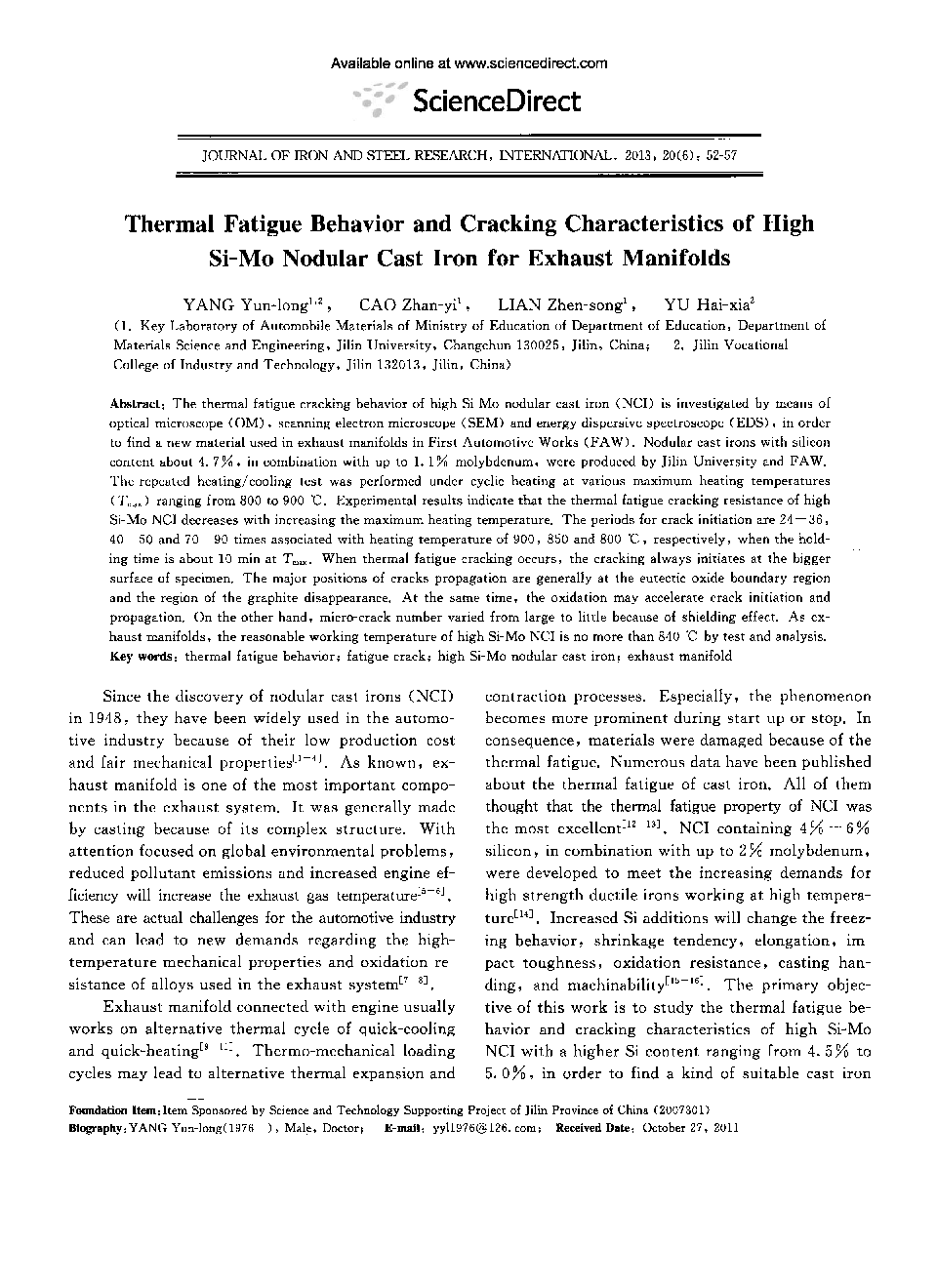| Article ID | Journal | Published Year | Pages | File Type |
|---|---|---|---|---|
| 1628875 | Journal of Iron and Steel Research, International | 2013 | 6 Pages |
The thermal fatigue cracking behavior of high Si-Mo nodular cast iron (NCI) is investigated by means of optical microscope (OM), scanning electron microscope (SEM) and energy dispersive spectroscope (EDS), in order to find a new material used in exhaust manifolds in First Automotive Works (FAW). Nodular cast irons with silicon content about 4.7%, in combination with up to 1.1% molybdenum, were produced by Jilin University and FAW. The repeated heating/cooling test was performed under cyclic heating at various maximum heating temperatures (Tmax) ranging from 800 to 900 °C. Experimental results indicate that the thermal fatigue cracking resistance of high Si-Mo NCI decreases with increasing the maximum heating temperature. The periods for crack initiation are 24—36, 40—50 and 70—90 times associated with heating temperature of 900, 850 and 800 °C, respectively, when the holding time is about 10 min at Tmsx. When thermal fatigue cracking occurs, the cracking always initiates at the bigger surface of specimen. The major positions of cracks propagation are generally at the eutectic oxide boundary region and the region of the graphite disappearance. At the same time, the oxidation may accelerate crack initiation and propagation. On the other hand, micro-crack number varied from large to little because of shielding effect. As exhaust manifolds, the reasonable working temperature of high Si-Mo NCI is no more than 840 °C by test and analysis.
